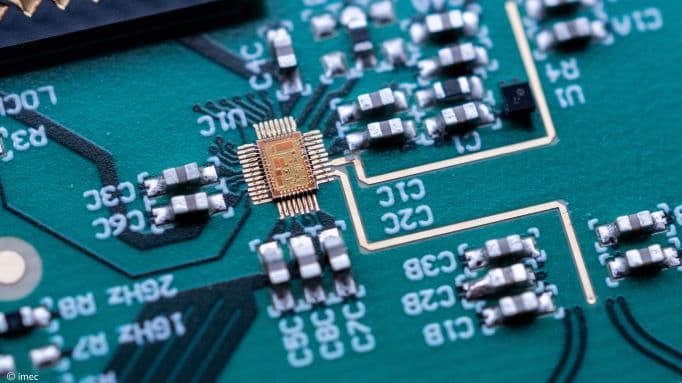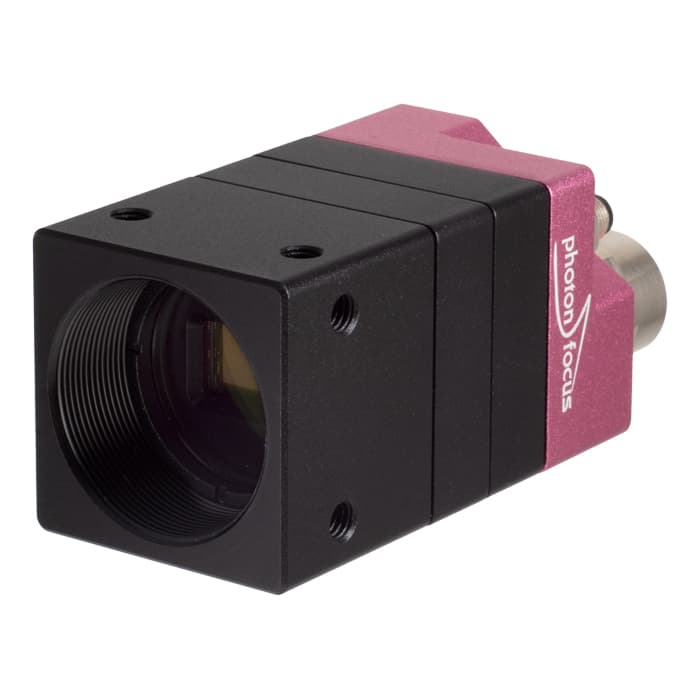Introduction
For An Jacobs and Andy Lambrechts, the Fourth Industrial Revolution is underway. And not only that: they are right in the thick of it, guiding several imec customers and industry partners day in, day out, throughout their smart innovation projects. Professor An Jacobs provides coaching on the basis of her expertise in the adoption of new technologies in the workplace; Andy Lambrechts and his team are the brains behind smart, integrated vision applications that are pouring into the manufacturing industry at full force. Together, they reflect on the concept of “smart industries” and on what imec has to offer in this area.
From collaboration between humans and machines to customized vision applications
“One of the most important topics we worked on in 2016 was the collaboration between humans and machines and the question of how we can make industrial labor more ergonomic, more pleasant,” An Jacobs begins. “And actually that is an issue that can be examined within a broader context, specifically that of bringing industrial production closer to home again. After all, one of the characteristics of the evolution towards a smarter industry - what we refer to as ‘Industry 4.0’ - is the need for personalized, customized products. By committing to an optimized collaboration between humans and machines - to be able to meet the demand for unique products with a high degree of efficiency and quality - we aim to strengthen local industrial activity.”
“On the other hand, we are also wholeheartedly committed to vision applications for quality inspection and detailed process monitoring, where our technology reveals far more detail than we would be able to detect with the naked eye. Over the past few months, the greatest challenge in that area has been to make the technologies launched by imec in recent years more robust. That was a response to specific demands from our customers. The fact that we can help them all the way from the introduction of technology through to its implementation in an industrial environment is a truly satisfactory experience,” Andy Lambrechts adds. “A good example of this can be found in microscopy, where we can identify different types of white blood cells in a very compact and scalable way. But we can also provide solutions to facilitate follow-up treatment for burn injuries, for example, or for monitoring and inspecting crops and food with hyperspectral cameras. In all these areas, we help our customers solve their industrial or medical challenges with affordable equipment - and we do it really quickly, too.”
Incidentally, helping customers with concrete solutions - rather than developing a prototype - has turned out to be an important requirement within the context of smart industries.
Andy Lambrechts tells us why. “This is why we decided a couple of years ago to produce - in limited series - the products our customers (often in high-value markets) require. Simply because there is no one else they can turn to. In addition to our technological expertise, we add to the mix our experience with materials, sensors, optics and software. A scope as broad as this really is unique. We have consciously invested in this in recent years, precisely because they are looking for solutions that work and are easy to pick up. And we have clearly reaped the rewards of that strategy in 2016, which translates into customers who keep coming back to us with new requests. Personally, I believe that is one of the most important achievements of the past year.”
According to An Jacobs and Andy Lambrechts, the merger of imec and iMinds, which was completed in 2016, is excellent news for imec’s partners and customers as well.
“Customers in the medical sector, for example, are not just in search of equipment to identify and sort different types of cells; solutions for this market also need to take security and privacy requirements into account. Customers active in the food industry, on the other hand, may benefit from the combination of our hyperspectral cameras and the data mining expertise that the merger with iMinds has brought on board,” Andy Lambrechts explains.
“If you want to take the step - as Andy just said - from prototypes to concrete products, the living lab methodology developed by iMinds might also be very valuable. That methodology can help to accurately define the requirements of a given technology, check certain assumptions in due time and produce a product that is genuinely relevant – both locally and internationally,” An Jacobs adds. “This is yet another area in which the broadened imec now occupies a unique position. A good example is the imec.icon ‘ClaXon’ project, which involves Audi Brussels and a number of other partners. In this project, we investigated the interaction and collaboration between humans and what we call ‘cobots’ (collaborative robots) in the manufacturing industry. In the course of the ClaXon project as well, prototypes were used several times – so that their effectiveness could rapidly be assessed.”
The broadened imec covers the entire smart industries value chain
“Obviously, in the next few years, we are going to continue building on what we have achieved in 2016. In terms of collaboration between humans and machines, for example, numerous possibilities in health care can be explored,” An Jacobs says. “At present, this sector primarily makes use of ‘passive’ robots that require constant control. But we are going to change that. By adding artificial intelligence, we can teach robots to take ‘the unexpected’ into account. Interaction with people - who are unpredictable by nature - is a good example of this. And we can also use this knowledge to boost further development in production environments, where we want to make robots respond more flexibly to new situations, such as a new model of car, for example, that has to roll off the production lines. Fact is that reprogramming production lines is an expensive, time-consuming task at present - which will in many cases result in an entire factory coming to a standstill. We are going to take significant steps in tackling all these challenges in the next few years. Safety will also be a focal point in this.”
“In addition, we are clearly going to continue helping our customers and partners to resolve difficult problems at systems level. The interesting thing about that is that it allows us to apply our innovations in markets where you wouldn’t initially expect this, and where our sensors are part of a far greater whole,” adds Andy Lambrechts.
Finally, An Jacobs and Andy Lambrechts agree that the synergy between hardware and software as well will continue to be exploited.
“In the past, covering the entire value chain in projects was often a problem - but that will become a lot easier for the broadened imec. This is also important for all our customers and partners: after all, decisions constantly have to be made in terms of both hardware and software; you can no longer consider them separately,” An Jacobs points out.
“For example, each market demands specific algorithms to deal with sensor data. Our sensor groups do not have the knowledge to build this up for each application separately. But the former iMinds groups do have that knowledge. It will enable us to fulfill our customers’ wishes even more end-to-end,” Andy Lambrechts concludes.

Professor An Jacobs co-ordinates the digital health projects within imec - VUB - SMIT. She has expertise on the adoption and appropriation of new technologies from a professional and an end-user point of view. At the University of Brussels, An teaches qualitative research methods in Communication Sciences. At iMinds (now part of imec) she has coordinated and participated in various European and Flemish research projects and work packages with a focus on digital technologies development, use and appropriation in health and wellbeing.

Andy Lambrechts received a MSc and PhD. degree in electrical engineering from Leuven University. He is currently leading imec’s Integrated Imaging team and is working on technologies such as hyperspectral imaging and lens-free microscopy. Andy is also involved in a variety of other activities that combine imec’s process technology with systems and software knowledge to enable new applications in the vision domain.
Published on:
1 January 2017














